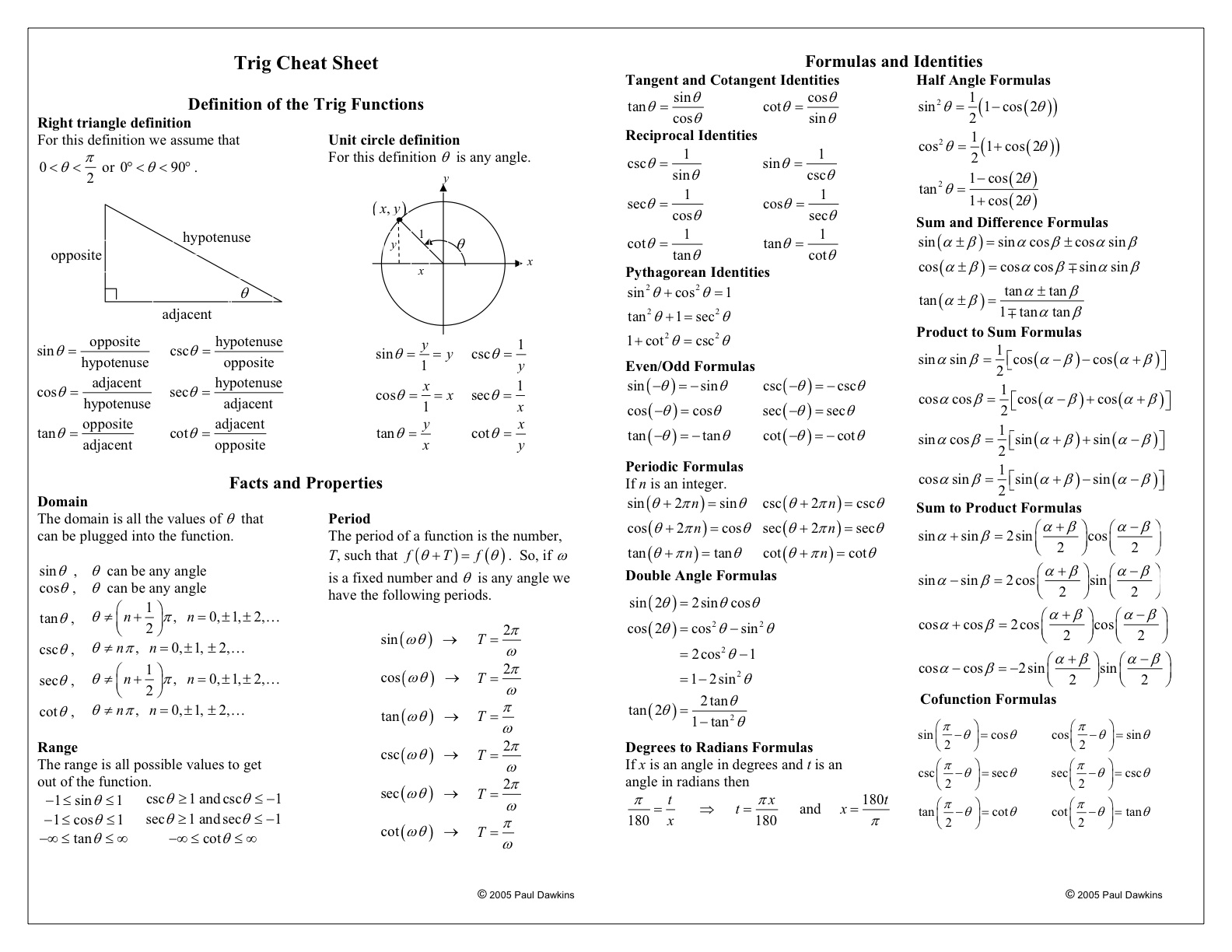

ASTC) is a mnemonic device that serves to help you evaluate trigonometric ratios. How does "all students take calculus" work? Whichever one helps triggers your memory most effectively and efficiently is the best one for you. Looking at each reciprocal identity we can see thatįeel free to create your own menmonic memory aid for these reciprocal trig functions. However, committing these reciprocal identities to memory should come naturally with the help of the memory aid discussed earlier above. Most often than not, you will be provided with a "cheat sheet", a sin cos tan chart outlining all the various trig identities associated with each of these core trigonometric functions. While these reciprocal identities are often used in solving and proving trig identities, it is important to see how they may fit in the grand scheme of the "All Students Take Calculus" rule Recall that each of the three core trig functions have reciprocal identities. What about the reciprocals of each trig function? You can also see how the cosine and tangent graphs look and what information you can get out of them. If you wanted to look further into trigonometric ratios, why not take a look and revise how the sine graph is graphed. As long as it contains ASTC in that order, you'll remember the trig quadrants. If you don't like Add Sugar To Coffee, there's other acronyms you can use such as:īetter yet, if you can come up with an acronym that works best for you, feel free to use it. See how this is an easy way to allow you to remember which trigonometric ratios will be positive? In quadrant two, only sine will be positive while cosine and tangent will be negative. What this tells us is that if we have a triangle in quadrant one, sine, cosine and tangent will all be positive. Lastly, in quadrant 4, x is positive while y is negative. In quadrant 3, both x and y are negative. In quadrant 2, x is negative while y is still positive.

In quadrant 1, both x and y are positive in value. In the above graphic, we have quadrant 1 2 3 4. ASTC will help you remember how to reconstruct this diagram so you can use it when you're met with trigonometry quadrants in your test questions. You can even use this diagram as a trigonometry cheat sheet.


 0 kommentar(er)
0 kommentar(er)
